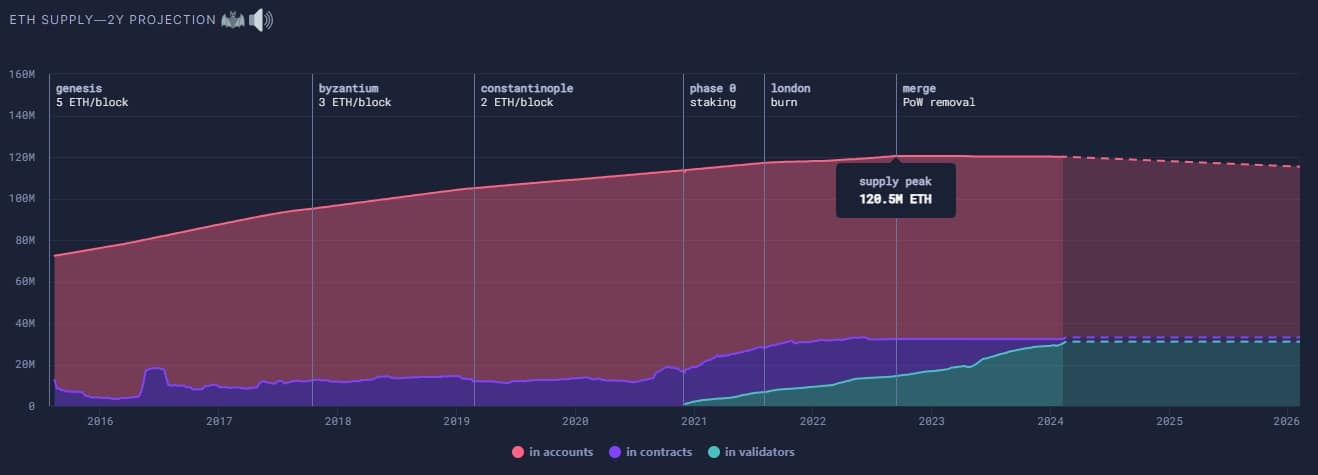The Ethereum blockchain has reached a significant milestone, with 25% of Ethers in circulation, or 30 million ETH, now placed in staking. This advance reflects a growing trend towards staking, indicating sustained interest in securing and further developing the network, in the shadow of the upcoming Dencun update.
A quarter of Ethers are staking
As the Ethereum ecosystem eagerly awaits the Dencun update, the network is celebrating a key milestone: 25% of Ethers are now staked in the blockchain. This represents over 30 million ETH, worth $72 billion at the current price.
Despite the sharp spike in Ethers awaiting withdrawal from staking, which occurred following the liquidation of Celsius’ assets, the network now boasts over 942,000 validating nodes.

Ether distribution on the Ethereum blockchain
Since the inauguration of phase 0 of the Ethereum blockchain’s transition to Proof of Stake (PoS) in November 2020, Ethers have been continuously transferred from smart contracts to staking, testifying to holders’ growing commitment to the network’s security.
Of a total supply of 120 million ETH, 88 million are held in wallets, 30 million are allocated to staking and only 2 million, or 1.7%, are used in smart contracts.
How can we explain such an increase in staked ETH?
The increase in Ethers allocated to staking rather than to smart contracts is mainly explained by the appeal of the yield offered by staking as the safest way of increasing revenue. In fact, it enables stakers to avoid the risks associated with hacking decentralized applications (dApps).
After the implementation of the Shanghai update in April 2023, allowing stakers to withdraw their funds after more than 2 years of waiting, a paradox emerged: an additional 10 million ETH were deposited in staking. The possibility of withdrawing funds appealed to many investors who were reluctant to stake their ETH without this flexibility option.
What’s more, the next Cancun-Deneb (Dencun) update, which promises to introduce Proto-Danksharding, a mechanism for reducing transaction fees on layers 2 and optimizing the use of blockchain storage space, is expected to come to fruition in the near future.
This update, by improving Ethereum’s scalability, makes the network more attractive to investors, and could encourage the development of applications aimed at a wider audience.
However, one worrying aspect remains: the concentration of Ethers within the Lido staking protocol, which holds over 30% of all staked ETH, or 9.5 million Ethers.
Should this protocol fail, the security of the entire Ethereum network could be compromised, or at least weakened.
